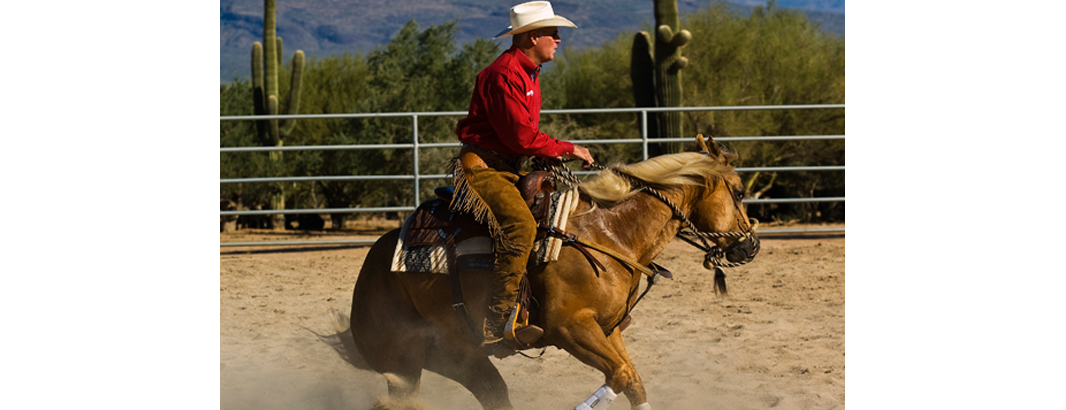On Western Riding: Styles, Fads and Trends
by Al Dunning

In the horse world, fads and styles come and go not unlike what happens in the fashion industry. Some training trends are detrimental to horses, both physically and mentally. This month Al shares his thoughts on western styles, both in training and in the show ring.
Question: The western disciplines change over time with new trends developing. Are there any current trends you like or dislike? Are there any changes you’d like to see or any changes you wish you could reverse?
Answer: The western pleasure classes, in general, do not represent true, natural gaits but have what is termed “show gaits.” Most are too slow, over-canted, and have a pumping head motion that is not pure forward motion. Many horses are too low, not bright appearing and don’t show natural ear expression. I have a firm belief that by encouraging light rein contact, rather than extremely loose reins (draped reins), we would elevate training and avoid this sort of robotic performance. I would like to see this change in all classes: no placings for horses that do not follow the AQHA rules.
Question: One of the current criticisms of western seems to be that we start our horses too young and put too much pressure on them at an early age, particularly with futurity events. What are your thoughts on these events and how much pressure should be put on a horse at a young age? Do you think it could be detrimental to their longevity?
Answer: I have witnessed horse owners that have pressured trainers to “get the job done,” and trainers that have thought more about fame over equine welfare. It is not the futurities that are the problem, it is human beings. Horse training, at any level, can be done correctly when the goal is a well-trained, happy, healthy horse that advances in harmony with their ability, maturity, soundness and mind set. Proper decisions are made by owners and riders that truly love and appreciate the equine athlete.
Question: Do you feel reining horses can also compete successfully in other disciplines? Which ones do you think they are most likely to be successful in?

Answer: When a horse is trained correctly for reining, they are getting all the tools to perform in various other classes as well. An accurate stop, a light rein, a smooth turn and the ability to lope in beautiful circles are the basics to a well broke horse. Whether you are riding in horsemanship, western riding, versatility ranch horse, roping, or other classes, all horses should have “reining basics.”
Question: Do you think competing a reining horse in different disciplines would be detrimental or beneficial to the horse?
Answer: Depending on a reining horse’s development, disposition, and specific quirks, riding them in other classes or outside the arena can help keep them from becoming rattled when entering the show ring. If a horse is pushed too hard in the maneuvers, they can become nervous when competing. Varying their regime helps cure show anxiety.

Al Dunning of Scottsdale, Arizona, is one of the most respected horsemen in the industry. Al and his students have garnered 48 world and reserve world championships. He has held numerous national leadership positions and earned multiple honors including induction into the AzQHA Hall of Fame. His 50+ years of experience as a professional trainer has led him to produce books, DVDs, clinics, Team AD online mentoring, and AD Tack, selling all the tack he uses as well as his books and videos. Al’s ability to reach people comes from his love of horses and out of respect to the mentors in his own life. For more information, visit https://www.aldunning.com or www.aldunningsadtack.com.






